Why Care About Your Pet's Fur?
Have you ever given your pet's fur more than a cursory glance while you're giving them a pat or a belly rub? If you're like most pet owners, you might not have. But did you know that your pet's fur is a significant indicator of their overall health and well-being? Think of it as a sort of health report that's updating in real-time. Yep, that glossy coat or those frizzy tangles are telling you a story—if you know how to read it.

You might be wondering, "Why should I bother?" Well, aside from aesthetic concerns, understanding the state of your pet's fur can offer vital clues about internal issues, from nutritional deficiencies to potential skin conditions. Imagine being able to spot a health concern before it becomes a full-blown problem! Intrigued? Keep reading.
Anatomy of Fur: More Than Just a Pretty Coat

Let's get a little scientific here. Fur comprises two main types of hairs: the undercoat and the guard hairs. The undercoat is soft and insulates the body, while the guard hairs are coarser and protect the skin. Ever wondered why your cat or dog might seem impervious to cold? You can thank that undercoat.
But that's not all. Fur also contains natural oils that help keep your pet's skin moist and their coat shiny. A lack of these oils can result in dull, dry fur, often a sign of poor nutrition or skin disorders. Now, you're beginning to see why a shiny coat is often a hallmark of a healthy pet, right?
Changes in Fur: What's Normal and What's Not?

So, your pet's fur seems a bit off lately? Don't hit the panic button just yet. Fur can change due to several factors, such as age, seasons, or diet. Your pet’s coat may thin out or grow thicker depending on the weather, and that's usually nothing to fret about.
However, if you notice sudden, drastic changes like extreme hair loss, bald patches, or a change in texture, it's time for a vet visit. These symptoms could point to a variety of issues, from allergies and skin conditions to more serious internal problems. Always better to be safe than sorry, no?
Nutrition: The Building Block of a Healthy Coat

What's the first step towards a shiny, luxurious coat? A balanced diet! A pet’s coat often reflects what they are fed. Lack of essential fatty acids, for instance, can result in a dull coat. Does your pet's fur look a bit lackluster? You might want to reconsider their diet. Look for foods that are rich in Omega-3 and Omega-6 fatty acids.
But remember, always consult with your vet before making any significant changes to your pet’s diet. A sudden change in diet can cause digestive issues or allergic reactions that could manifest—guess where? —in the fur and skin. See, it's all connected!
Grooming: It's Not Just for Looks

Ah, grooming. Some pets love it; others behave like you're subjecting them to medieval torture techniques. But grooming is about more than just making your pet look pretty. Regular brushing removes dead hair, dirt, and debris from your pet’s coat. It also distributes natural oils evenly, making the coat shinier and healthier.
Not just that, grooming is an excellent way for you to inspect your pet’s fur and skin closely. You could discover ticks, fleas, or unusual bumps that might require a vet’s attention. Also, regular grooming can reveal changes in fur quality early on, helping you address any issues proactively.
Final Thoughts: Your Pet’s Coat Is a Health Barometer
Well, there you have it, folks. Your pet's fur is more than just a fuzzy, loveable trait; it's a crucial indicator of their overall health. So the next time you're cuddling your furry friend, take a moment to inspect their coat. What is it telling you? With regular checks and proper care, you can ensure not just a gleaming coat, but a happy, healthy pet.
Have questions or concerned about changes in your pet's coat? Don't hesitate. Schedule a vet appointment for a professional opinion. After all, when it comes to your pet's health, it's always better to be fur-warned and fur-armed!

Visit Dr. Jeff Werber’s Instagram account (@werbs_dvm) to view and submit questions and answers on weekly AMAs – or call and leave a voicemail at 424-835-0576. Your call will be returned posthaste. For emergencies, download Dr. Jeff Werber’s app Airvet, a video-chat option for veterinary needs at any time of day or night!
